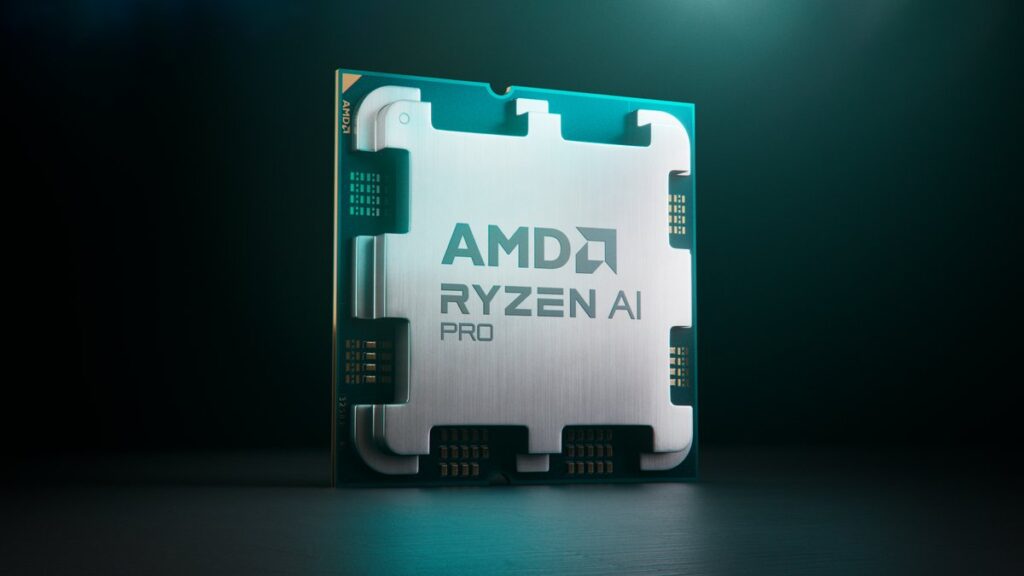AMD Layoffs: What’s Really Happening Behind the Silicon Giant’s Workforce Cuts

Introduction: A Shockwave Through Silicon Valley
AMD Layoffs The tech world thrives on innovation, competition, and adaptation—but every so often, we see the human side of these corporate shifts in the form of layoffs. Advanced Micro Devices (AMD Layoffs), the semiconductor giant known for powering everything from gaming PCs to massive data centers, recently made headlines with its layoffs. For many, this came as a surprise. After all, AMD Layoffs has been one of the fastest-growing chipmakers in the last decade, challenging industry leaders like Intel and NVIDIA at every turn.
But the news of AMD layoffs paints a more complex picture than just “cost-cutting.” It reflects a combination of market pressures, strategic restructuring, and the unpredictable tides of the semiconductor industry. Let’s break it all down—why it’s happening, what it means for employees, and where AMD could be headed next.
The Backdrop: Why Are AMD Layoffs Hitting Tech Giants?

Before we dive into AMD Layoffs specifically, it’s important to understand the broader trend. Layoffs aren’t just an AMD story—they’re an industry story. From Google to Meta, Microsoft to Intel, nearly every big player in the tech sector has been tightening its belt since 2023.
The pandemic boom that saw tech companies grow at lightning speed came with a downside: overexpansion. Many tech firms hired aggressively to meet soaring demand for digital services, cloud computing, and semiconductors. When that demand normalized, companies were left with oversized teams and declining revenues. AMD Layoffs, like many others, wasn’t immune to this wave of correction.
Another major factor has been global economic uncertainty. With inflation, high interest rates, and shifting consumer spending, even robust companies like AMD Layoffs have been forced to reassess their strategies. The once unstoppable growth in PC sales and GPU demand started cooling off, and chipmakers suddenly found themselves with excess inventory and reduced margins. When that happens, cost optimization becomes inevitable—and unfortunately, that often means job cuts.
AMD Layoffs Journey: From Underdog to Industry Powerhouse
To really understand why the layoffs sting, it helps to remember AMD Layoffs story. For years, AMD was considered the underdog in the chip race—always lagging behind Intel in market share and profit margins. That narrative began to change around 2017 with the introduction of the Ryzen processor line and the Zen architecture, which completely flipped the CPU market dynamics. AMD was suddenly not just a competitor but a leader in performance and value.
By 2020, AMD Layoffs stock price had skyrocketed, and its chips were powering everything from gaming rigs to supercomputers. The acquisition of Xilinx, a company specializing in programmable chips, further expanded AMD Layoffs footprint into AI and data center markets. Lisa Su, AMD’s CEO, was celebrated as one of the most successful leaders in tech.
But with great growth comes great complexity. The integration of Xilinx and Pensando (another AMD acquisition focused on networking and cloud infrastructure) meant AMD Layoffs now had a more diverse but also more complicated organizational structure. As the company grew, so did its need to streamline operations—a reality that’s becoming clear with the latest layoffs.
The AMD Layoffs: What We Know So Far
While AMD hasn’t disclosed exact figures for every round of AMD Layoffs, multiple reports suggest that the company has been making targeted cuts across several divisions. The focus, according to insiders, has been on reducing redundancy after its mergers and refocusing on core growth areas like AI, GPUs, and high-performance computing.
Many of the AMD Layoffs appear to have impacted marketing, sales, and non-engineering roles, as AMD tightens operations to stay agile in a competitive environment. It’s not about a financial collapse—it’s about strategic refocusing. The company continues to post solid earnings, but profit margins are under pressure due to macroeconomic challenges and increasing R&D costs.
For employees, the AMD Layoffs come as a painful reminder that even thriving tech firms aren’t invincible. However, AMD has made efforts to support affected workers, including severance packages and outplacement assistance. In the volatile tech job market, such measures offer at least a soft landing for those caught in the restructuring.
The Bigger Picture: AI, GPUs, and the Battle for the Future
Ironically, the AMD layoffs are happening at a time when the company is poised for one of its biggest opportunities yet—the rise of artificial intelligence. The global race to build powerful AI chips has seen NVIDIA dominate headlines and profits, but AMD is making its move with the MI300 series, designed to compete directly with NVIDIA’s H100 GPUs.
This battle for AI supremacy requires immense investment. Developing cutting-edge chips means billions of dollars in R&D, testing, and manufacturing. To stay competitive, AMD Layoffs must channel its resources into the most promising areas, even if that means trimming less critical departments.
So, while layoffs might seem like a setback, they could also signal AMD Layoffs attempt to sharpen its focus. By reallocating talent and capital toward AI and data center technologies, the company is positioning itself for the next big wave of computing. It’s a risky but potentially rewarding move—one that could define AMD’s trajectory for the next decade.
Employee Morale and Industry Reactions
Whenever a company as iconic as AMD Layoffs announces layoffs, it inevitably affects morale—not just internally, but across the broader tech ecosystem. Current employees are understandably anxious, wondering if more cuts are coming, while former employees face the challenge of re-entering a competitive job market.
Industry peers have responded with a mix of empathy and pragmatism. Many recognize that AMD Layoffs are not an isolated case but part of a larger shift toward efficiency and profitability in tech. Recruiters and rival companies are also actively seeking to absorb AMD’s displaced talent, recognizing their expertise in chip design, hardware engineering, and AI acceleration.
Social media platforms like LinkedIn have become spaces for solidarity, where former AMD Layoffs employees share their stories and receive support from the community. It’s a bittersweet reflection of how resilient the tech workforce can be—even when faced with sudden disruption.
Financial Implications: Short-Term Pain for Long-Term Gain
From a business standpoint, AMD Layoffs often serve as a short-term measure to stabilize finances. For AMD, reducing operational costs helps balance its ambitious R&D spending and maintain investor confidence. Wall Street typically reacts positively to restructuring efforts if they signal a path toward higher efficiency and profitability.
Still, there’s a balancing act at play. Cutting too deeply can hurt innovation, which is AMD Layoffs lifeblood. The challenge lies in reducing costs without sacrificing the creative and engineering power that has driven AMD’s success. So far, the company appears to be handling this cautiously, focusing on streamlining rather than slashing indiscriminately.
In the long term, these moves could make AMD Layoffs leaner and more competitive, especially as it faces mounting pressure from NVIDIA and Intel. If the company’s AI and data center strategies pay off, today’s layoffs might be seen as a tough but necessary pivot.
Looking Ahead: Can AMD Layoffs Bounce Back Stronger?
The question on everyone’s mind is simple: where does AMD Layoffs go from here? Despite the layoffs, there’s every reason to believe the company’s future remains bright. AMD has consistently demonstrated resilience and adaptability, bouncing back from setbacks that once seemed insurmountable.
With the AI revolution in full swing, AMD Layoffs upcoming chip launches and strategic partnerships will be key to regaining momentum. If the company successfully carves out a significant share of the AI hardware market, it could more than offset the temporary turbulence caused by workforce reductions.
At its core, AMD Layoffs story has always been one of reinvention. The current layoffs might mark the end of one chapter, but they could also be the beginning of another—one where AMD emerges leaner, smarter, and more focused on the technologies that will shape the future.
Conclusion: A Tough Transition, But Not the End
The AMD layoffs are undoubtedly difficult for the employees affected, and they mark a sobering moment for one of tech’s most celebrated companies. Yet, in the broader narrative, they’re also part of a natural evolution. The semiconductor industry is in constant flux, and survival depends on how well companies can pivot and innovate.
For AMD Layoffs, the layoffs aren’t a sign of failure—they’re a recalibration. The company is adapting to market realities while doubling down on the areas that will define the next era of computing. In a few years, when we look back, this moment might just be remembered not as a setback, but as a strategic turning point in AMD Layoffs journey toward long-term leadership in the AI-driven world.



